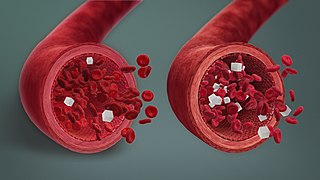
Hypoglycemia,also spelled hypoglycaemia or hypoglycæmia,sometimes called low blood sugar,is a fall in blood sugar to levels below normal,typically below 70 mg/dL (3.9 mmol/L). Whipple's triad is used to properly identify hypoglycemic episodes. It is defined as blood glucose below 70 mg/dL (3.9 mmol/L),symptoms associated with hypoglycemia,and resolution of symptoms when blood sugar returns to normal. Hypoglycemia may result in headache,tiredness,clumsiness,trouble talking,confusion,fast heart rate,sweating,shakiness,nervousness,hunger,loss of consciousness,seizures,or death. Symptoms typically come on quickly.
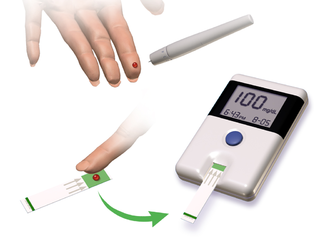
Blood glucose monitoring is the use of a glucose meter for testing the concentration of glucose in the blood (glycemia). Particularly important in diabetes management,a blood glucose test is typically performed by piercing the skin to draw blood,then applying the blood to a chemically active disposable 'test-strip'. The other main option is continuous glucose monitoring (CGM). Different manufacturers use different technology,but most systems measure an electrical characteristic and use this to determine the glucose level in the blood. Skin-prick methods measure capillary blood glucose,whereas CGM correlates interstitial fluid glucose level to blood glucose level. Measurements may occur after fasting or at random nonfasting intervals,each of which informs diagnosis or monitoring in different ways.
Medical physics deals with the application of the concepts and methods of physics to the prevention,diagnosis and treatment of human diseases with a specific goal of improving human health and well-being. Since 2008,medical physics has been included as a health profession according to International Standard Classification of Occupation of the International Labour Organization.
Medical anthropology studies "human health and disease,health care systems,and biocultural adaptation". It views humans from multidimensional and ecological perspectives. It is one of the most highly developed areas of anthropology and applied anthropology,and is a subfield of social and cultural anthropology that examines the ways in which culture and society are organized around or influenced by issues of health,health care and related issues.

Health informatics combines communications,information technology (IT),and health care to enhance patient care and is at the forefront of the medical technological revolution. It can be viewed as a branch of engineering and applied science.
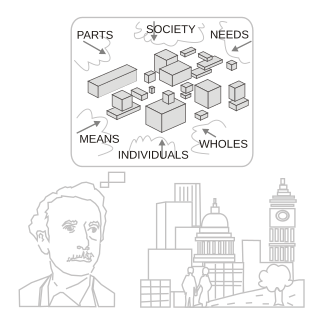
Systems science,also referred to as systems research or simply systems,is a transdisciplinary field that is concerned with understanding simple and complex systems in nature and society,which leads to the advancements of formal,natural,social,and applied attributions throughout engineering,technology and science,itself.
Virtual reality in telerehabilitation is a method used first in the training of musculoskeletal patients using asynchronous patient data uploading,and an internet video link. Subsequently,therapists using virtual reality-based telerehabilitation prescribe exercise routines via the web which are then accessed and executed by patients through a web browser. Therapists then monitor the patient's progress via the web and modify the therapy asynchronously without real-time interaction or training.

Automated insulin delivery systems are automated systems designed to assist people with insulin-requiring diabetes,by automatically adjusting insulin delivery in response to blood glucose levels. Currently available systems can only deliver a single hormone—insulin. Other systems currently in development aim to improve on current systems by adding one or more additional hormones that can be delivered as needed,providing something closer to the endocrine functionality of the pancreas.
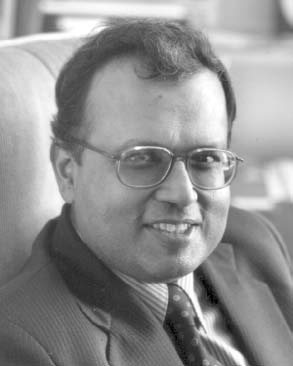
Amar Gupta is an Indian computer scientist based in the United States. Gupta has worked in academics,private companies,and international organizations in positions that involved analysis and leveraging of opportunities at the intersection of technology and business,as well as the design,development,and implementation of prototype systems that led to widespread adoption of new techniques and technologies.

Computer-aided detection (CADe),also called computer-aided diagnosis (CADx),are systems that assist doctors in the interpretation of medical images. Imaging techniques in X-ray,MRI,endoscopy,and ultrasound diagnostics yield a great deal of information that the radiologist or other medical professional has to analyze and evaluate comprehensively in a short time. CAD systems process digital images or videos for typical appearances and to highlight conspicuous sections,such as possible diseases,in order to offer input to support a decision taken by the professional.
Robert S. H. Istepanian is a visiting professor at the Faculty of Medicine,Institute of Global Health Innovation,Imperial College,London. Istepanian is widely recognized as the first scientist to coin the phrase m-Health. In 2012,Istepanian coined the new term 4G Health which is defined as "The evolution of m-health towards targeted personalized medical systems with adaptable functionalities and compatibility with the future 4G networks."

In medicine,monitoring is the observation of a disease,condition or one or several medical parameters over time.

A body area network (BAN),also referred to as a wireless body area network (WBAN),a body sensor network (BSN) or a medical body area network (MBAN),is a wireless network of wearable computing devices. BAN devices may be embedded inside the body as implants or pills,may be surface-mounted on the body in a fixed position,or may be accompanied devices which humans can carry in different positions,such as in clothes pockets,by hand,or in various bags. Devices are becoming smaller,especially in body area networks. These networks include multiple small body sensor units (BSUs) and a single central unit (BCU). Despite this trend,decimeter sized smart devices still play an important role. They act as data hubs or gateways and provide a user interface for viewing and managing BAN applications on the spot. The development of WBAN technology started around 1995 around the idea of using wireless personal area network (WPAN) technologies to implement communications on,near,and around the human body. About six years later,the term "BAN" came to refer to systems where communication is entirely within,on,and in the immediate proximity of a human body. A WBAN system can use WPAN wireless technologies as gateways to reach longer ranges. Through gateway devices,it is possible to connect the wearable devices on the human body to the internet. This way,medical professionals can access patient data online using the internet independent of the patient location.
Medical image computing (MIC) is an interdisciplinary field at the intersection of computer science,information engineering,electrical engineering,physics,mathematics and medicine. This field develops computational and mathematical methods for solving problems pertaining to medical images and their use for biomedical research and clinical care.

V. Mohan is an Indian physician/scientist specializing in diabetology. He is the Chairman of Dr. Mohan’s Diabetes Specialities Centre,which is an IDF Centre of Excellence in Diabetes Care. He is also the Chairman of the Madras Diabetes Research Foundation in Chennai which is an ICMR Centre for Advanced Research on Diabetes.
The Journal of Diabetes Science and Technology(JDST) is a bimonthly peer-reviewed medical journal covering all aspects of diabetes. JDST covers all aspects of diabetes technology including glucose monitoring;insulin and metabolic peptide delivery;the artificial and bioartificial pancreas,telemedicine;software for modeling;physiologic monitoring;technology for managing obesity;diagnostic tests of glycation;and the use of bioengineered tools such as MEMS,new biomaterials,and nanotechnology to develop new sensors and actuators to be applied to diabetes. Articles in JDST cover both basic research and clinical applications of technologies being developed to help people with diabetes. It is published by SAGE Publishing on behalf of the Diabetes Technology Society. The journal was established in 2007 and the editor-in-chief is David C. Klonoff.
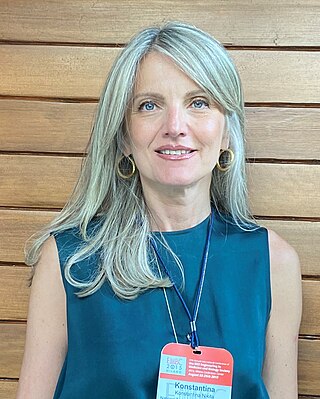
Konstantina "Nantia" Nikita is a Greek electrical and computer engineer and a professor at the School of Electrical and Computer Engineering at the National Technical University of Athens (NTUA),Greece. She is director of the Mobile Radiocommunications Lab and founder and director of the Biomedical Simulations and Imaging Lab,NTUA. Since 2015,she has been an Irene McCulloch Distinguished Adjunct Professor of Biomedical Engineering and Medicine at Keck School of Medicine and Viterbi School of Engineering,University of Southern California.

Jürgen W. Czarske is a German electrical engineer and a measurement system technician. He is the director of the TU Dresden Biomedical Computational Laser Systems competence center and a co-opted professor of physics.
Thomas Rudolf Pieber is an Austrian clinical specialist in endocrinology and diabetes. He is Professor of Medicine,Head of the Division of Endocrinology and Metabolism and Chairman of the Department of Internal Medicine at the Medical University of Graz. He is also Director of the Institute of Biomedicine and Health Sciences at Joanneum Research.

Jasjit S. Suri is an American engineer who works in the fields of biomedical engineering,computer science and clinical engineering. His work is focused on the implementation of artificial intelligence in biomedicine,and healthcare.













